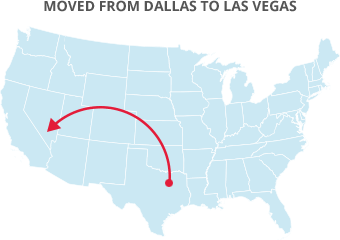

 There's something about a large stack of boxes and spools of packing tape that is refreshing—here is your excuse to sift through all your things and meticulously wrap your treasures, so when you reach your new residence and commence unpacking the boxes it will feel just like your birthday when you were a little one. Pretend for a few seconds that's how the entire sequence of events actually unwinds, and you are not scampering through the home like a maniac tossing heirloom crystal in with the set of encyclopedias, be sure you've got the right packing supplies for your moving job.
There's something about a large stack of boxes and spools of packing tape that is refreshing—here is your excuse to sift through all your things and meticulously wrap your treasures, so when you reach your new residence and commence unpacking the boxes it will feel just like your birthday when you were a little one. Pretend for a few seconds that's how the entire sequence of events actually unwinds, and you are not scampering through the home like a maniac tossing heirloom crystal in with the set of encyclopedias, be sure you've got the right packing supplies for your moving job.
Boxes and tape are a few of the most important supplies for packing, and all boxes and tape are NOT created equal. It is okay to toss random coffee mugs in an old shoe box and put it on the top shelf of the pantry, but to pack, stack, and move that box, it will collapse like a house of cards and you'll end up with a lot of broken crockery.
If you're packing yourself, do some research into the materials prior to getting started. If you're hiring a moving company to handle the actual moving, they will most likely have the best heavy-duty boxes, tape, and wrapping paper you will require. If not, storage facilities, big box stores, and the internet are good places to get your supplies, but since you cannot do tactile research over the internet, don't count on reviews to help you—everybody packs differently and "sturdy" and "solid" are highly subjective terms.
Find boxes that are corrugated--a layer of wavy fiber between the inner and outer layers of heavy cardboard. The corrugation helps with structure and strength, so when you stack them on the moving truck they do not crumple. There are varying amounts of rigidity within the corrugated world, so you may get the box stability you need for a specific item--go with the strongest duty boxes for the most delicate and the bulkiest items you will pack.
While you're purchasing boxes, make sure and get plenty of the small ones--heavy belongings go in small boxes, bulky lightweight things go in the larger boxes. For instance, books weigh a lot and should be packed in a small box. Blankets and throw pillows are comparatively light and can be placed in the bigger ones.
Picking up inexpensive, low quality tape is where lots of DIY packers get discouraged. If it's cheap, it won't adhere well. Worse, it will stick to itself coming out of the gun and splinter in small little slivers and then you have to pick at it for quite a while and aim to get it to unstick in a single piece. Be extravagant and purchase a good-quality gun or two with a padded handle—you'll be overjoyed you did when you are eighty boxes in with a lot more to pack. It's also a good idea to buy your tape in bulk--it costs less and you can usually return what you don't use.
 There are several alternatives for padding inside the boxes. Old towels and sheets are amazing when you require something lining the box, for example when you're packing shoes and don't want them crashing around.
There are several alternatives for padding inside the boxes. Old towels and sheets are amazing when you require something lining the box, for example when you're packing shoes and don't want them crashing around.
Newsprint is definitely the best choice for nearly everything--from wrapping mugs (thread a twisted end through the handle and stick the other ends inside once it's wrapped) to books to small appliances.
Bubble wrap can be costly, but buy the good stuff anyway, since that's what you will use it for. The bubble size varies, but a fair rule of thumb is for your bubble size to couple the item size—keep the big bubbles for padding around the entire box. Touch the wrap before you buy, and make sure of how strong it is when you twist and pull it. If it is not strong or doesn't feel like the bubbles hold, try another brand.
If you have not moved in a while, and you go hunting for boxes, prepare to be astounded at the choices you have. If your parents moved, they got their tape and boxes and had the entre neighborhood retaining newspapers for months. Currently, there are bunches of specialty moving supplies you will see when you go shopping—several are actually worth the extra cost, some are just reinventing the wheel—it's up to you to decide what's going to be best for you. Remembe, be positive you're getting decent quality--you do not need your mattresses in flimsy plastic sheeting.
Now that you have the smaller items under control, you need to think about how you are going to get the bulky items out the door--the furniture, the lawn mower, the grill--but don't be anxious, help is right around the corner. For moving several of these items renting equipment is the easiest way to go.
Your furniture is more susceptible to damage than you probably realize--surface dings and scrapes are super common when items come off the truck. You can negate these with some key protection; again, be sure you're obtaining decent quality materials that stand up to the rigors of moving.
The last items you'll require are for the really heavy and bulky things. Unless you happen to have these items already, you’ll want.
No matter how you are actually transporting your home, your local moving company will be able to provide you with all of the supplies you'll require to move. Just keep in mind that you're moving your entire life in these boxes, so be positive that your moving supplies are up to the task.

